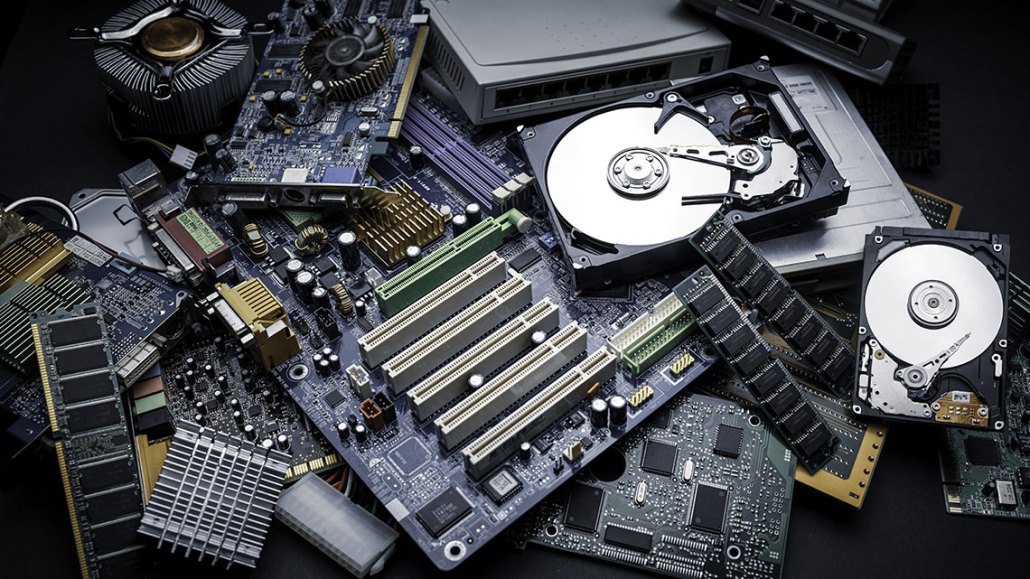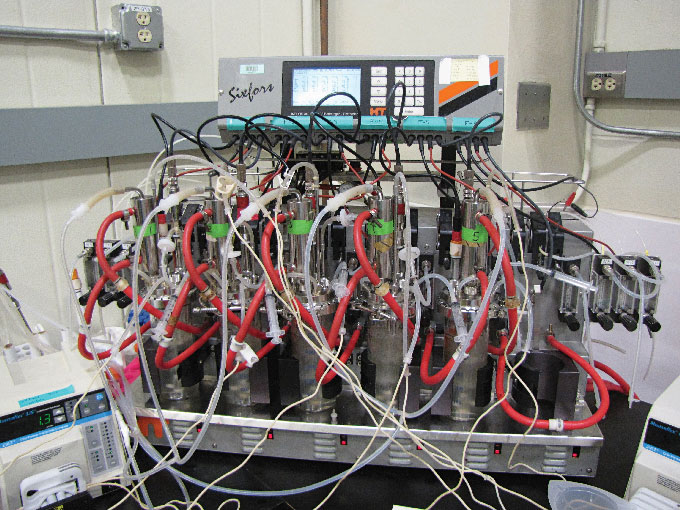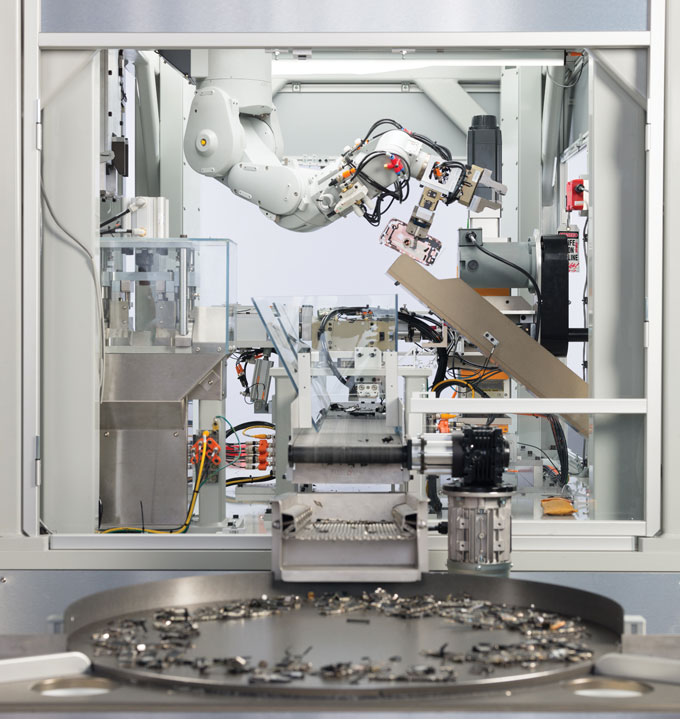Recycling rare-earth elements is hard — but worth it
Scientists are inventing new — and greener — ways to reuse these valuable metals

Here are electronics parts from old computers. Recycling the rare-earth metals in these parts might help meet demand for these highly valued materials.
Adam Smigielski/iStock/Getty Images Plus
Share this:
- Share via email (Opens in new window) Email
- Click to share on Facebook (Opens in new window) Facebook
- Click to share on X (Opens in new window) X
- Click to share on Pinterest (Opens in new window) Pinterest
- Click to share on Reddit (Opens in new window) Reddit
- Share to Google Classroom (Opens in new window) Google Classroom
- Click to print (Opens in new window) Print
By Erin Wayman
Our modern lives depend on metals known as rare earths. Unfortunately, these elements are so widely used and popular that someday soon we may not have enough of them to meet society’s needs.
Because of their special properties, these 17 metals have become crucial to high-performing computer screens, cell phones and other electronics. Compact fluorescent lamps use them. So do medical-imaging machines, lasers, high-power magnets, fiber optics and pigments. They’re even in rechargeable electric car batteries. These elements are also a gateway to a climate-friendly low- or zero-carbon future.
In 2021, the world mined 280,000 metric tons of rare earths. That’s roughly 32 times as much as in the mid-1950s. By 2040, experts estimate we’ll need up to seven times as much as we use today.
There are no good substitutes for most of the jobs that rare earths do. So satisfying our appetite for these metals won’t be easy. They are not found in rich deposits. So miners must excavate huge amounts of ore to get them. Then companies must use a mix of physical and chemical processes to concentrate the metals and separate them out.
Those processes use lots of energy. They’re also dirty and use toxic chemicals. Another concern: China is nearly the only place where these metals are mined and processed. Right now, for instance, the whole United States has just one active rare-earths mine.
All of this explains why researchers are looking to recycle these metals. Recycling is “going to play a very important and central role,” says Ikenna Nlebedim. He’s a materials scientist at the Department of Energy’s Critical Materials Institute. (It’s run by Ames National Laboratory in Iowa.)
Within 10 years, Nlebedim says, recycling could meet up to one fourth of the need for rare earths. If true, he says, that would be “huge.”

In the United States and Europe, it’s standard to recycle from 15 to 70 percent of high-use metals, such as steel. Yet today, only about 1 percent of the rare earths in old products get recycled, notes Simon Jowitt. A geologist, he works at the University of Nevada, Las Vegas.
“Copper wiring can be recycled into more copper wiring. Steel can just be recycled into more steel,” he says. But a lot of rare-earth products are “not very recyclable.”
Why? Often they have been blended with other metals. Separating them out again can be very hard. In some ways, recycling rare earths from tossed-out items is about as challenging as extracting them from ore and processing them.
Rare-earth recycling tends to use hazardous chemicals, such as hydrochloric acid. It also uses a lot of heat — and thus a lot of energy. And that effort may only recover a tiny amount of metal. A computer’s hard-disk drive, for instance, might contain just a few grams (less than an ounce) of rare-earth metals. Some products might have just a thousandth as much.
But scientists are trying to develop better recycling approaches to reduce the need for mining more of these metals.
From bacteria to salts and milling
One approach recruits microbes. Gluconobacter bacteria naturally produce organic acids. These acids can pull rare earths — such as lanthanum and cerium — from used catalysts or from the glowing phosphors that make fluorescent lights glow. The bacterial acids are less harmful to the environment than other metal-leaching acids, says Yoshiko Fujita. She’s a biogeochemist at Idaho National Laboratory in Idaho Falls.
In experiments, those bacterial acids recover only about a quarter to half of the rare earths from catalysts and phosphors. That’s not as good as hydrochloric acid, which in some cases can extract up to 99 percent. But the bio-based approach might still be worth the effort, Fujita and her team report.
Other bacteria can also help extract rare earths. A few years ago, researchers discovered that some microbes produce a protein that can grab onto rare earths. This protein can separate rare earths from each other — such as neodymium from the dysprosium used in many magnets. Such a system might avoid the need for many toxic solvents. And the waste left from this process will biodegrade.

Another new technique uses copper salts — not acids — to pull rare earths from discarded magnets. Neodymium-iron-boron (NIB) magnets are the single biggest user of rare earths. Rare earths make up almost one-third of these magnets by weight. Within seven years, recycling the neodymium from NIB magnets in U.S. hard-disk drives could meet about 5 percent of the world’s demand for this metal (outside of China).
Nlebedim led a team that developed a technique that uses copper salts to leach rare earths from magnets in shredded electronics. The process has also been used on leftovers from the making of magnets. There, it could recover 90 to 98 percent of the rare earths. The extracted metals are pure enough to make new magnets, Nlebedim’s team has shown. Their process could also be better for the climate. Compared with one of the main ways rare earths are mined and processed in China, the copper-salt method has less than half its carbon footprint.
An Iowa company called TdVib has just built a pilot plant to use this copper-salt process. It aims to produce two tons of rare-earth oxides per month. It will recycle rare earths from old hard disk drives from data centers.
Noveon Magnetics is a company in San Marcos, Texas. It’s already making recycled NIB magnets. After demagnetizing and cleaning discarded magnets, it mills the metal into a powder. That powder is used to make new magnets. Here, there’s no need to first extract and separate the rare earths. The final product can be more than 99 percent recycled magnet.
Compared with the usual way of making NIB magnets, this method cuts energy use by about 90 percent, researchers reported in a 2016 paper. Noveon also estimates that it only releases about half as much carbon dioxide, a greenhouse gas.

Collecting products to recycle remains an issue
Many communities have programs to collect metal, paper or glass for recycling. Nothing like that exists for collecting trashed products that contain rare earths, says Fujita, at the Idaho National Laboratory. Before rare-earth recycling can begin, you’ll have to get to those bits that contain the valued metals.
Apple has launched efforts to recycle some of its electronics. Its Daisy robot can dismantle iPhones. And last year, Apple announced a pair of robots — Taz and Dave — that aid in the recycling of rare earths. Taz can gather magnet-containing modules that are typically lost during the shredding of electronics. Dave can recover magnets from another part of the iPhones.
Still, it would be a lot easier if companies just designed products in a way that made recycling easy, Fujita says.
But no matter how good recycling gets, Jowitt sees no getting around a need to boost mining efforts. Society’s hunger for rare earths is just too big — and growing. He does agree, however, that recycling is needed. “Better we try and extract what we can,” he says, “rather than just dumping it in the landfill.”







